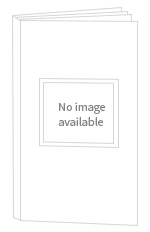How do archaeologists unearth the daily life of people from Jesus’s time? Contrary to popular belief, archaeology of first-century Roman Galilee is not about illustrating or proving the Go
How do archaeologists unearth the daily life of people from Jesus’s time?
Contrary to popular belief, archaeology of first-century Roman Galilee is not about illustrating or proving the Gospels, drawing timelines, or hunting treasure. Rather, it is about understanding the lives of people, just like us, who lived in the time of Jesus. How do we understand Jesus and his mission as part of a larger world? How do we interpret material culture alongside textual evidence from the Gospels? How do we know where and how to dig?
James Riley Strange teaches students how to address these problems in this essential textbook. Drawing on professional experience as a scientific archaeologist in Israel, Strange explains current methodology for ground surveying, excavating evidence, and interpreting data. Excavating the Land of Jesus is the ideal guide for students seeking answers in the dirt of the Holy Land.
CHOICE
“This book is excellent as an introductory text or for select readings for schools with strong historical archaeology programs or that offer introductory archaeology or histories of the Levant c. 400 CE and earlier. . . . Highly recommended.”
“James Riley Strange offers much more than ‘excavating the land of Jesus’ in this compact and engaging volume. Originally intended as a text for the archaeological field school at Shikhin in Israel, Strange’s book demonstrates how the dialogue between texts and monuments is as complex as scientific archeology itself. This book not only serves as an introduction to the archaeology of Roman Galilee but is also very much an invitation to a new perspective on the Gospels.”
—Eric M. Meyers, Duke University
“Strange provides an engaging and crystal-clear introduction to archaeology for non-specialists, focusing on Roman Galilee in the time of Jesus. He explains simply but without dumbing down how and why archaeologists dig and the differences between (and limitations of) the types of information derived from archaeological remains versus literary sources such as the Gospel accounts. Strange illustrates his discussion by describing recent discoveries such as what ongoing excavations have revealed about ancient Magdala (thought to be the hometown of Mary Magdalene), or how olive oil was produced and used in Roman Galilee. This slender volume will appeal to a broad readership and can also be used as an introductory textbook.”
—Jodi Magness, University of North Carolina at Chapel Hill
“In this thoughtful and clearly written book, James Riley Strange explains how and why archaeologists excavate the land where Jesus walked. In short, rather than seeking to confirm or deny a Gospel account, today's archaeologists simply seek to understand ancient people and their values. In noting how and where archaeologists dig, the author elucidates the connections between ancient texts and modern technologies in ways that help readers of the Gospels better understand Jesus and his ministry in the light of first-century material culture. A must-read for students of Jesus, the Gospels, and archaeology, for sure!”
—Paul N. Anderson, George Fox University
“James R. Strange has a love of archaeology that may be exceeded only by his love of teaching. In Excavating the Land of Jesus, both of these passions contribute to a volume that shows not only how archaeologists tend to work, but even how they often think. Strange uses basic questions to raise issues large and small as a way of introducing the reader to the many aspects of scientific archaeology. Using language that is serious but accessible, this volume is as promised, an excellent introduction to how archaeologists study the people of the Gospels.”
—Daniel Schowalter, Carthage College
“James Riley Strange has filled a need by providing a resource that focuses on the methods, practice, and theory of archaeology in connection with the study of the New Testament. Most resources on the New Testament and archaeology tend to survey major archaeological finds that are relevant to the New Testament but do not teach the reader much about how archaeology is done or about what sorts of questions archaeologists ask. Strange’s latest work does not only present archaeological finds; it teaches the reader how to think archaeologically. This book is highly recommended for students of all levels with an interest in the intersection of the Bible and archaeology as well as for New Testament scholars who might stand to learn much about the goals, questions, limits, and methods of archaeology in relation to the study of Jesus and the Gospels. First time volunteers and participants in archaeological excavations will also benefit greatly from it.”
—Jordan Ryan, Wheaton College
View Review quote
James Riley Strange is the Charles Jackson Granade and Elizabeth Donald Granade Professor in New Testament at Samford University. He also directs the Shikhin Excavation Project in Israel and researches the archaeology of Palestine in the Hellenistic through Byzantine periods, early Christianity, and postbiblical Judaisms.
View Biographical note
Table of Contents
Foreword by Luke Timothy Johnson
Preface
List of Abbreviations
Introduction: The Problem of Understanding First-Century Roman Galilee
1. The Problems of Where to Dig and How to Know Where You Are Digging
2. The Problem of How to Dig
3. The Problem of Using Texts and Archaeology
4. The Problem of Understanding Ancient Technologies
5. The Problem of Understanding Ancient Values
Conclusion: The Problem of Why Archaeologists Dig
Works Cited
Illustration Credits
Indexes
View Table of contents
